The row over grazing that could spell the end of sheep farming on Dartmoor
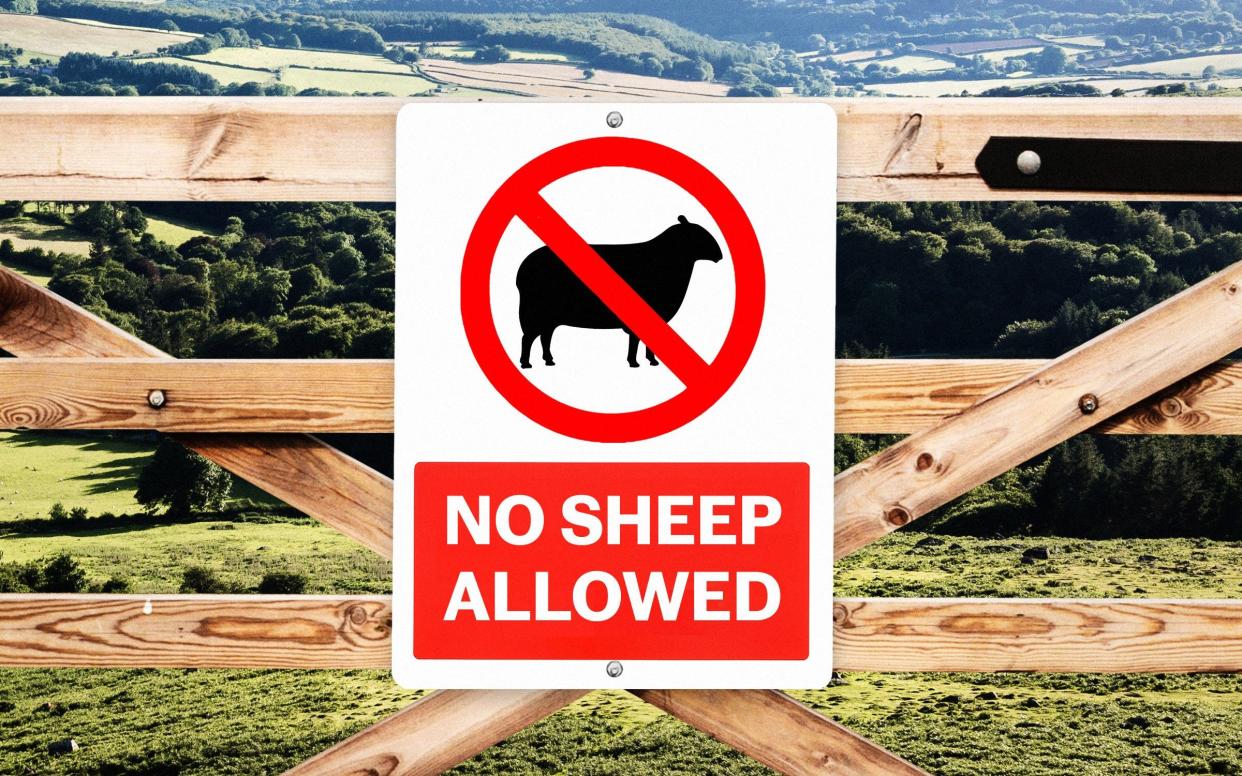
Setting out from her farmhouse, Helen Radmore drives across the steadily climbing landscape of west Dartmoor on the hunt for her sheep.
It’s clearance time, the part of the year when commoners – those farmers that claim ancient grazing rights across Dartmoor’s unenclosed ‘commons’ – collect their flocks off the hills to be tagged and checked before they are returned back out for the winter.
“We have had some abortive attempts, because the river’s been too high and we can’t get them through,” she says. “And the fog comes down, so you have to go out a second time, because you’ve missed some of them.
“Farming is an art, as well as a science, with an awful lot of luck thrown into it.”
This year, for the first time, Radmore is not sure if the sheep she has brought in off the commons where she holds rights will have a home there in the future.
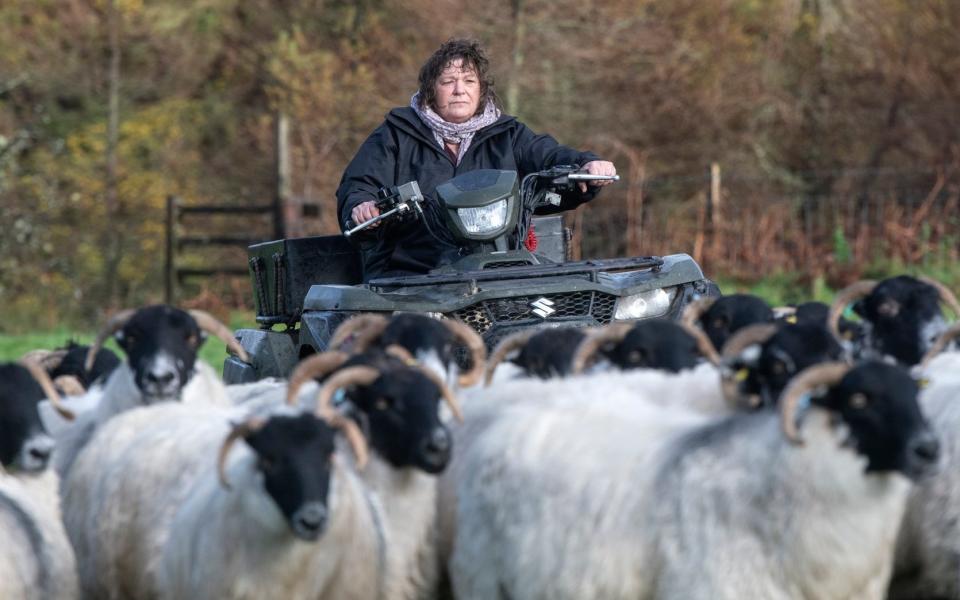
Earlier this year, Natural England, as the custodian of the protected areas of the moor, wrote to commoners suggesting the numbers of livestock on the commons may need to be drastically reduced if they were to continue receiving payments for protecting and restoring nature on Dartmoor.
Conservationists fear that the constant nibbling by sheep has left the moorland’s vital habitats overgrazed and struggling, and over the years has driven away its curlews, golden plovers and ring ouzels.
“These upland habitats are internationally important,” says Dave Slater, Natural England’s regional director, as he walks a path through Yarner Wood, in east Dartmoor.
Around a quarter of Dartmoor is a site of special scientific interest, designated for particular features such as its blanket bog, heathland and granite tors. The majority of these sites are considered to be in unfavourable condition.
“This is western gorse, which only appears in this part of the world,” he says, pointing to a spiky shrub peppered with bright yellow flowers.
“Despite having agri-environment schemes over the last 30 years, a lot of the habitats have declined significantly. Grazing is not the only factor, but it’s quite an important factor.”
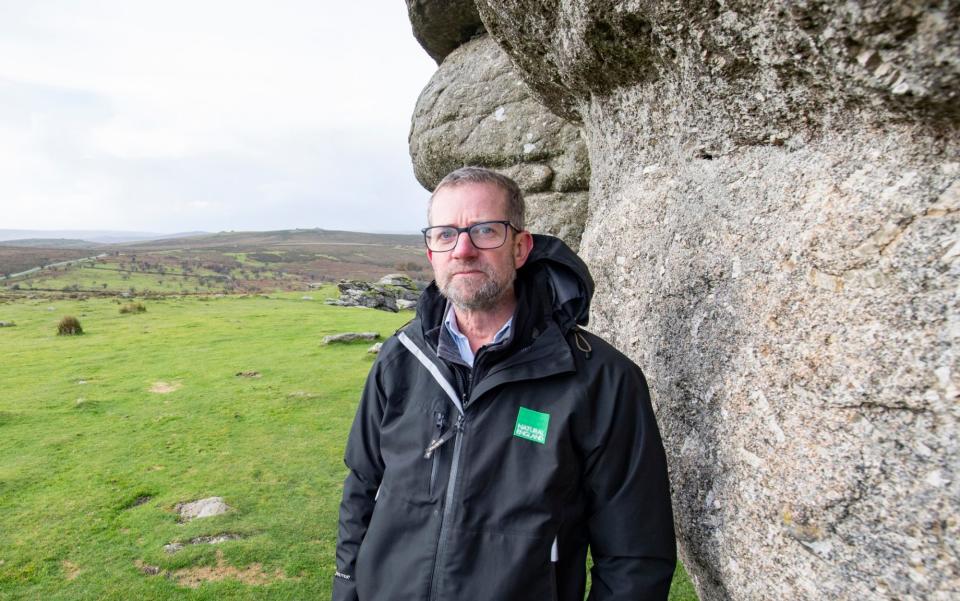
Heather cover has plummeted from 25 per cent to just 1 per cent on some parts of Dartmoor since Natural England last agreed management plans with the commoners 10 years ago.
“I want to stand here in 10 years and be looking at curlew bubbling away over there,” Slater says. “It’s difficult to see how those habitats will ever recover unless we reduce that grazing pressure.”
The payments from the Natural England-run schemes are crucial for the commoners keeping sheep on the moor, who operate on some of the tightest margins of any farmers in the country.
Upland livestock farms, like those here, saw their incomes drop by a massive 41 per cent in the past year, as a result of higher costs, and a fall in subsidies post-Brexit.
For farmers like Radmore, the ability to keep sheep on the moor all year round is important, not just for maintaining a centuries-old community, but to guarantee a thriving farm business.
She points to the public goods that farmers provide which, she feels, go underappreciated by bodies like Natural England. “Farmers aren’t valued for their historical understanding of commons and how they work,” she says.
This includes maintaining the landscape for visitors, clearing the mediaeval leats that carry water across the moor and, most importantly, monitoring wildfire risk.
“More and more farmers have refused to do the fire training,” says Radmore. “Because, they say, if we can’t graze there, why should we go up there and put the fires out?”
“This is a way of life. But just because it’s a way of life, we still need business. We can’t live on fresh air. If you’re a tenant, you pay your rent through your productivity. So if you’ve got no livestock, you’ve got no productivity. You can’t pay your rent.”
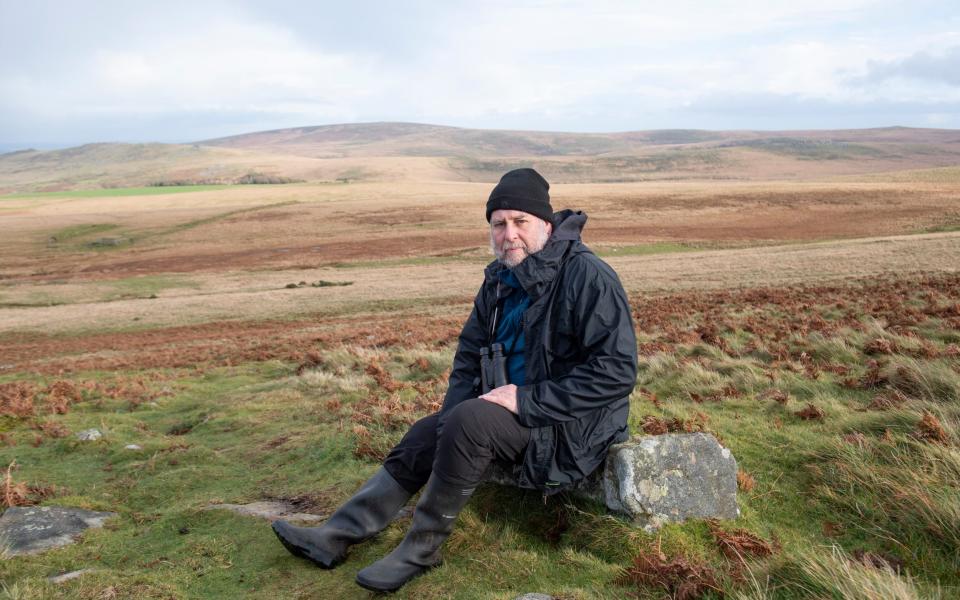
Reaction to Natural England’s missive earlier this year was swift and overwhelmingly negative among the farming community.
The proposals were described as “draconian” and “savage” on the front page of the Farmers Guardian, which quoted commoners saying it was “rewilding by the back door”.
Slater acknowledges that communication of the proposed changes was somewhat botched. “I think we definitely learnt lessons,” he says.
The reaction was so heated that it prompted the farming minister, Mark Spencer, to step in, pause any changes and order an independent review, headed by former cricketer and Devon landowner David Fursdon.
It is due to report back by the end of this month, after hearing evidence from dozens of individuals and groups, and its conclusions will inform a new approach on Dartmoor.
Natural England insists it was never the case that it wanted to entirely remove livestock from the land, and that farmers are valued as stewards of the land.
“I don’t want to be completely down on sheep,” says Slater. “They are an important part of the mix.”
Sheep have grazed on Dartmoor since prehistoric times, moulding the ecology of the moor and its patchwork of heather, bracken, gorse and grassland. Native Dartmoor breeds, which trace their lineage back to the Soay sheep that emerged in the Iron Age, were traditionally kept on the moor under a system known as “levancy and couchancy”.
Sent up to the commons in the summer, they would be brought down to farmers’ own fields in the winter, giving the moors time to regenerate.
This system was gradually broken by the introduction in the late 19th century of hardier breeds brought down from the north, in particular the Scotch Blackface, now the dominant sheep on the moor, which is able to graze all year round.
With little grass on the commons in the winter, the sheep turn to new shoots of bilberry and heather, stunting their growth.
The great enemy on Dartmoor is molinia, also known as purple moor grass, which blankets vast swathes of the landscape, crowding out anything else.
The result of a reduction in cattle numbers during the summer, historic drainage of the land and, more recently, nitrogen in the atmosphere from fertilisers, the molinia is a blight on Dartmoor, and one that sheep won’t touch.
The result is that Dartmoor is actually both overgrazed and undergrazed, says Tony Whitehead, a local environmental campaigner. Standing on a hillside battered by fierce winds beneath the West Mill Tor, he points out what he sees are problems with the Dartmoor landscape.
“On the highest ground and on the wetter slopes, we should have bog and blanket bog, and dwarf shrub heath,” he says. “On the steepest slopes where you’re looking at bracken, currently, you’ve got the potential for scrub and for woodland regeneration. Instead it’s been reduced in many places to an incredibly species-poor monoculture because of the molinia, and in other places very species poor acid grassland.”
“This is a place that’s dying,” he adds. “It’s not supporting what it could support. All for a few sheep. The people that have the right skills to restore Dartmoor are the farmers, because a lot of these landscapes are anthropogenic. To maintain healthy heathland you need to graze it with the right animals, the right places, at the right time of year, in the right numbers.”
But Whitehead admits that is not always an easy message to communicate. “It can get very heated,” he says of some of the meetings with commoners to discuss the future of Dartmoor. “Which in some ways I’m pleased about, because it shows people’s passions for the land. I would hate it if people were indifferent.”
One of the solutions to the dreaded molinia is at risk of becoming a casualty of the drive to reduce stocking numbers on the moor.
Since 2008, the Dartmoor Pony Heritage Trust has kept 30 native breed ponies on an enclosed Forestry England site next to the hamlet of Bellever, right in the heart of the national park. Less fussy than sheep, and with hooves well suited to trampling the long grass, the ponies have turned hillsides that were once carpeted in molinia into a patchwork of heather and bilberry.
Observational studies by the charity show six red-listed species of birds have returned to the site in the 15 years since the ponies have been here.
“Back in the 1950s, there were around 30,000 ponies on Dartmoor,” says Debbie Leach, CEO of the Dartmoor Pony Heritage Trust. “You had a huge mix of animals out here and the moor in those days was in fantastic condition.”
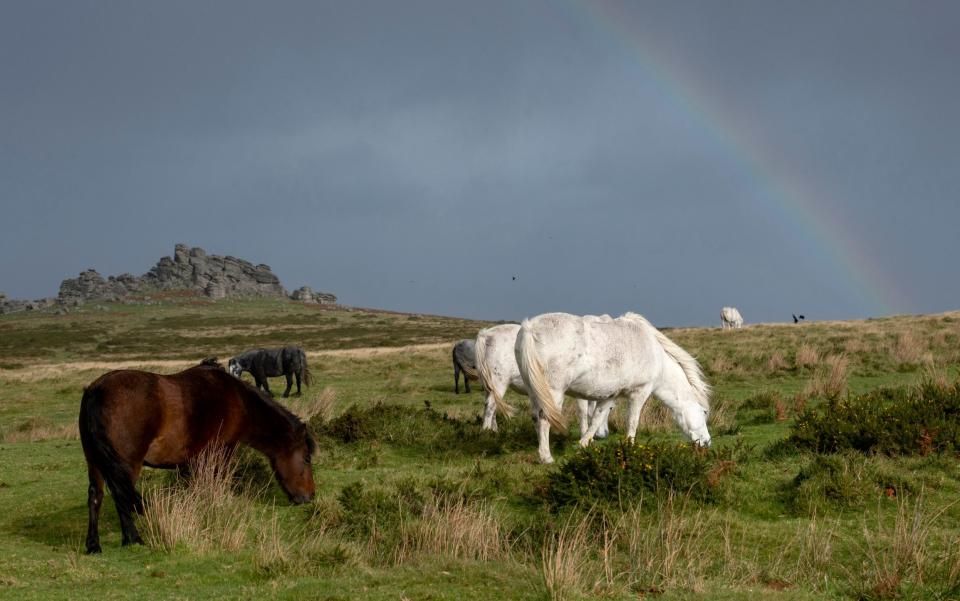
Native breed numbers have dropped dramatically since then, down to only around 500 now.
“We need a mix of grazers on the moor,” says Leach. But she fears this is not well appreciated by either Natrual England, which is proposing a single quota for both cattle and ponies on the moor, or farmers, who will choose cows over ponies because they fetch more money.
Numbers are so low that the native breeds are at risk of dying out, and with them their role in protecting the moor as well as the genetic diversity that brings resilience in the face of climate change.
“It’s quite scary how few there are now,” says Leach. “What we need to do is convince the farmers it makes economic sense to breed these heritage ponies. Farmers love the ponies. The ponies have a place in their heart, but possibly not in their head.”
All of this speaks to a broader rethink on what we want from our countryside, and how we pay for it. At the same time that Natural England is seeking to reduce sheep numbers on the moor (without increasing what it pays the commoners), farmers are seeing their direct subsidies, introduced under the EU, slashed in the wake of Brexit.
Meanwhile the Government has ambitious targets to improve nature and biodiversity, and has vowed to use its agricultural budget to help achieve them. As a result, the £5 million a year spent on schemes on Dartmoor is coming under understandable scrutiny.
But while it is upland hill farmers like those on Dartmoor who can do the most to help restore nature, prevent flooding and store carbon, they are the ones at risk of losing out the most from the current upheaval in agricultural subsidies, says Tom Lancaster from green think-tank the Energy and Climate Intelligence Unit (ECIU).
He says that Defra has focused its attentions post-Brexit on its least ambitious schemes, which pay farmers for “simple environmental actions” such as improving soil health.
Much less attention has been focused on paying farmers for schemes that create woodlands, or restore peatlands and carbon-rich grasslands, which could give farmers like those on Dartmoor a way to boost their incomes.
“Dartmoor is a microcosm,” he says. “This issue is going to be replicated across the country. The root cause of a lot of this is that Defra doesn’t have a new scheme for paying farmers for doing more.”
A Defra spokesperson said: “Upland farmers play a critical role in our rural communities and natural environment, and there is something on offer for every business to support them to produce food sustainably while protecting nature and enhancing the environment.
“We are continuing to work closely with farmers and landowners as these schemes are rolled out. We’ve already increased payment rates under Countryside Stewardship and the Sustainable Farming Incentive to make sure that upland farmers are paid the same as lowland farmers for carrying out the same action.”
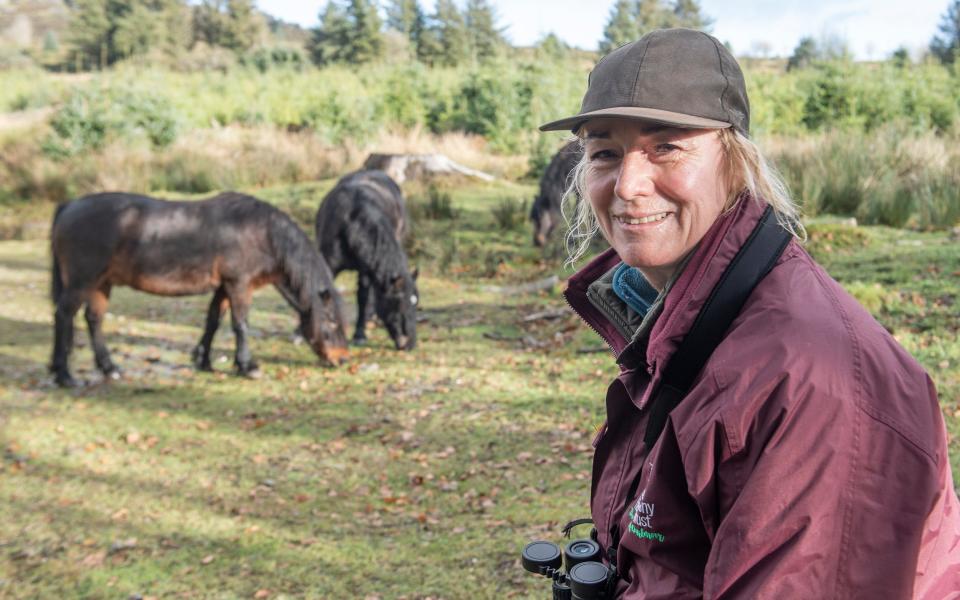
The outcome of the so-called Dartmoor review is therefore heavily anticipated, by both conservationists and farmers, and not just because of what it means for the future of this national park.
The issues at stake reflect a much broader debate about what we should do with our uplands post-Brexit in the face of climate change and the decline of nature. Among many in the farming community, there is still much distrust to be overcome.
“A lot is hanging on this review,” one farmer says. “Because if Natural England aren’t stopped, it will destroy it and everything that is on it.”
Others, including Radmore, are more conciliatory. “I really hope that this Dartmoor review is going to bring a reset, and get a better working relationship between all of us,” she says. “I just hope we get a better way forward. I want to be here, or my family to be here if that’s their choice, for a long time to come.
If there is unanimity among the competing voices on Dartmoor, it is on this point.
“We can’t go on like this,” Slater says.

